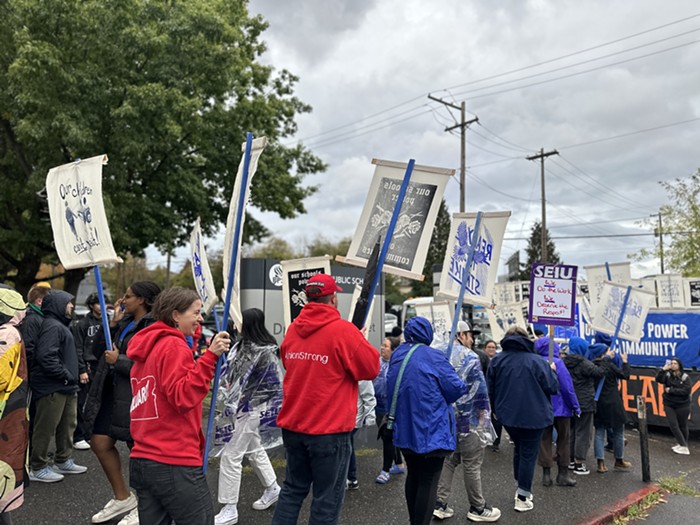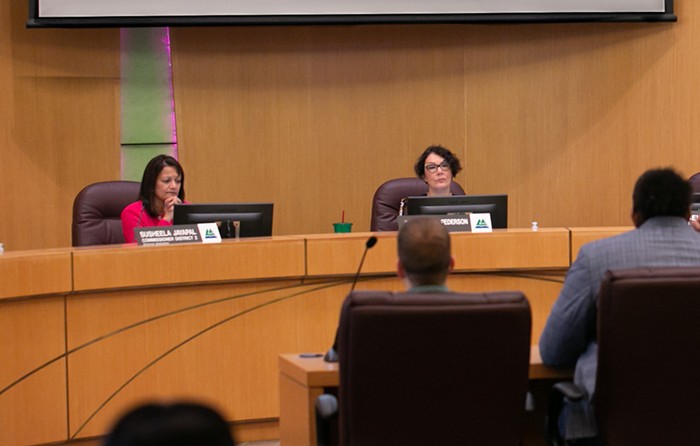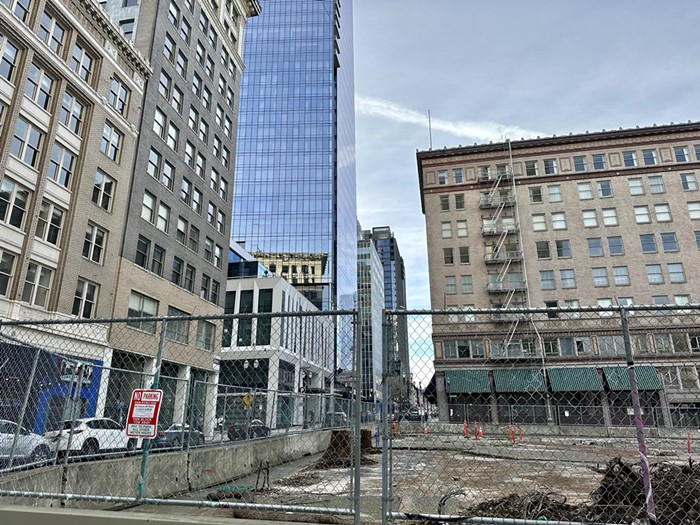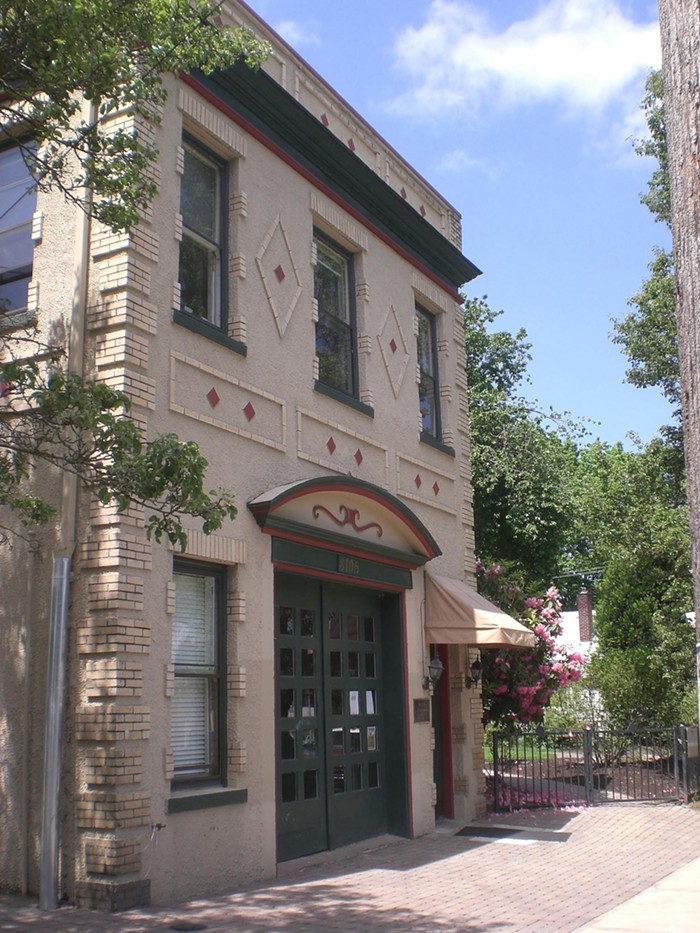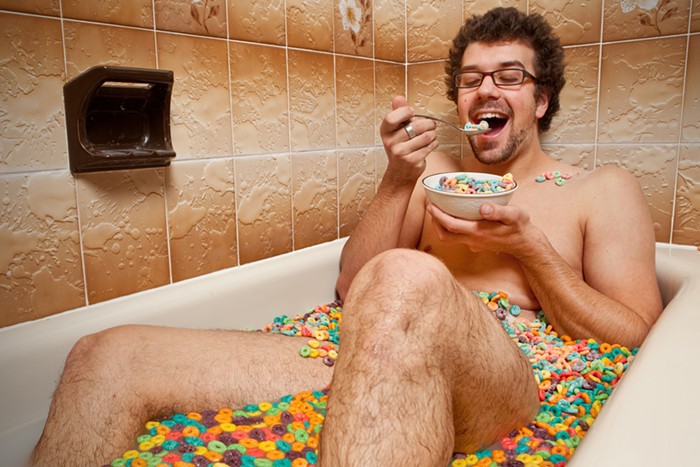
It’s no surprise that Portland is expecting one of the worst environmental catastrophes in the world when the major Cascadia earthquake hits. But a new report released Monday confirmed this looming threat.
The report, commissioned by the City of Portland and Multnomah County, takes inventory of the Critical Energy Infrastructure (CEI) Hub—a group of fuel storage and transfer tanks located along the Willamette River in Northwest Portland—and predicts what would happen to the hub when the Cascadia Subduction Zone earthquake, or “the big one,” hits.
The report found that this quake could trigger one of the largest oil spills in history that would destroy the Willamette River’s ecology and nearby residential areas.
“We've known for a long time that the Critical Energy Infrastructure Hub and all the tank farms there pose a really grave threat to the city, the county, the region, the whole state, and environment in an earthquake,” said Portland Bureau of Emergency Management (PBEM) Interim Director Jonna Papaefthimiou. “There’s a desire to take measures to reduce the risk, but it seemed like the first step in any rational action plan was to get more information.”
The city and county commissioned a report on the CEI Hub in 2019 to do just that. For the past two years, teams of researchers from ECONorthwest and Salus Resilience have been gathering information about the industrial hub through fire marshal records, permit documents, and other publicly available records to provide an inventory of what materials exist in the area, and what would happen to those materials in the event of a major earthquake.
There are 630 tanks within the hub, 415 of which are actively used to hold over 150 different types of fuels, including gasoline, diesel, and crude oil. The study reports each active tank is filled to 67 percent capacity on average—the actual amount varies depending on the material held in the tank. That means the tank hub currently holds an estimated 233,460,422 gallons of fuels, petrochemicals, and oil in storage.
But, how much of those toxic materials will actually spill if an earthquake hits?
The likelihood of tank failure—the tank breaking and leaking material—is dependent on the tank’s age.

Researchers estimate that if a tank was built before 1993, it’s guaranteed to fail because of the limited technology available at the time to build a tank capable of withstanding a seismic event. The report predicts that the tanks built before 1993 will release 50 to 100 percent of their stored materials in an earthquake. Thanks to advancements in design, tanks built between 1993 and 2004 are built to withstand the shaking of an earthquake but not the liquefaction, or lateral spread, of the ground they sit on. The CEI Hub sits on infill land, so the ground is expected to liquify and shift during an earthquake. Because of this, researchers predict that up to 10 percent of materials inside tanks built between 1993 and 2004 will spill.
With the addition of new seismic design standards the city introduced in 2004, tanks built after 2004 are capable of withstanding both shaking and liquefaction. While the tanks are unlikely to fail, the report still estimates the newer tanks will release up to 10 percent of their contained material due to pipe connection failures.
Of the actively used tanks, 380, or about 92 percent, are assumed to be built before 1993. The report states that 23 tanks were built between 1993 and 2004, and 12 tanks were built after 2004.
From that inventory, the report estimates tanks at the CEI Hub would release anywhere from 94 million to 194 million gallons of fuel and oil into the ground and Willamette River.
The volume of the maximum spill is equivalent to about 531 Olympic-size swimming pools, or three Dallas Cowboys AT&T Stadium’s worth of hazardous oils. The spill would rival the 2010 Deepwater Horizon oil spill, which dumped an estimated 206 million gallons of oil into the Gulf of Mexico and is considered one of the worst environmental disasters in the world.
The ramifications of the potential spill vary depending on the season. In the winter, the oil spilled into the Willamette River—an estimated 40.8 to 82.5 million gallons—would reach the Pacific Ocean in three days. If the earthquake happens in the summer, it would take about 15 days for the oil to spread to the ocean.
Regardless of the season, the report estimates about 55 percent of the oil spilled in the water will evaporate into the air or burn during a fire on the river within three days. The rest of the oil will remain in the water and have to be cleaned by hazmat crews. The report does not estimate how long the clean up would take.
The impacts on human life are not fully known, but assumed to be catastrophic. The two ZIP codes closest to the industrial hub—97231 and 97210 in the Linnton neighborhood—have a total residential population of 16,508 and a total employment population of 31,517, according to the report.
Linnton resident Sarah Taylor lives about half a mile from the nearest tank and keeps an emergency backpack by her front door with supplies to evacuate at a moment’s notice.
“In the bathroom we have rolls of plastic and duct tape, because we're supposed to cover all the windows and vents in case there are toxic fumes,” Taylor said. “[The city] said don't try to run, just tape one room—they recommend a bathroom—and you go in there with your cell phone and your charger and then just tape yourself in. I don't think most people in Portland are told to do that.”
According to a county spokesperson, none of Portland’s bridges, including the newly built Tilikum Crossing, are expected to withstand the Cascadia earthquake. That means Linnton residents wouldn’t be able to escape the area via the St. Johns Bridge. It’s also possible that Forest Park could catch fire during the earthquake, blocking another escape route for people who live next to the CEI Hub. Portland Fire & Rescue (PFR) representatives say that they will mobilize to the best of their abilities following the earthquake, but the magnitude of destruction will be greater than their capabilities.
“Our hazmat team plans all the time for things, but this would be on a scale that will quite honestly exceed our abilities,” said Terry Foster of PFR.
“We have really appreciated their candor, because we do not want to be under the impression somebody is going to come rescue us,” said Nancy Hiser, a member of the Linnton Neighborhood Association. “We’re all going to be on our own to some degree if it is as massive as predicted to be, so we try to build our resilience and we try to get smarter.”
The Linnton Neighborhood Association has written letters to the Western States Petroleum Association (WSPA), which represents some of the companies at the CEI Hub, in an attempt to gain more information about the safety of the hub. They received a response stating the tanks at the CEI Hub were in line with the design requirements at the time they were built, and that “all storage tanks are designed, constructed, and maintained to rigorous standards and meet or exceed appropriate federal and state laws.”
“We all would love to believe the [petroleum industry when they say] that we are safe, but I don't think any of us do believe that,” said Shawn Looney, another member of the neighborhood group. “I think we all believe scientists who say those tanks are on liquefiable soil, and they're not going to hold up and they will shake and there will be a spark and they will explode.”
Multnomah County Commissioner Sharon Meieran, an early supporter of commissioning the CEI Hub report in 2019, isn’t surprised by anything the report found.
“We didn't really need the report to tell us things were really bad,” Meieran, whose district includes the CEI Hub, said. “You just drive by the place and you can see it looks like a sort of post-apocalyptic zone. What we did need was a report that really quantified the damage and that would really detail the scope and the scale and the reach of the damage that would be likely to occur in the event of a major earthquake.”
The city and county needed the data in the CEI Hub report in order to move to the next phase of the report: determining who is responsible for the costs associated with a catastrophic oil spill.
The July 26 report is technically just a draft. According to Papaefthimiou of PBEM, the city is releasing the CEI Hub draft report in order to gain insight from community members and fill in any gaps that researchers may have missed. Papaefthimiou is anticipating tribal members may provide more information on how an oil spill would impact their fishing and cultural practices, or companies in the CEI Hub may add more detail on their facilities that weren’t publicly available.
Once public comment has been taken into account, the research team will start calculating the economic costs relating to the oil spill. That report is expected to be released in October 2021.
“Our underlying desire to understand the costs is in part a desire to create financial accountability for cleanup,” Papaefthimiou said. “But ultimately, if they cause a huge amount of damage and then they pay a huge amount of money to fix it, there's still losses that are uncompensated. Lost lives can’t be compensated, lost family homes, and lost tribal treaty rights are really cultural and spiritual losses that you can't put dollar value on.”
Papaefthimiou hopes when the research team comes up with a dollar figure representing the costs of clean up—costs that local agencies plan to hold the fossil fuel industries accountable for—the companies that use the hub will start to be more proactive about retrofitting their older tanks.
“When we fully understand how great the costs are, then perhaps retrofits suddenly start to seem like a more economically reasonable action,” Papaefthimiou said.
City and county officials have not detailed any other preventative solutions to the potential oil spill aside from incentivizing the fossil fuel companies to retrofit their tanks.
Having a dollar estimate of the economic impacts of the oil spill will also help local policy makers start to create policies that explicitly place the financial burden on the fossil fuel industry.
“One of the exciting elements of this work is to figure out some innovative ways that we can potentially hold industry accountable for potential damages caused by their policies, products, and how they are storing these fuels,” said county commissioner Meieran.
The issue of placing the liability on the fossil fuel companies is reminiscent of the City of Portland’s current struggle with Zenith Energy. Zenith, one of the fossil fuel companies with tanks in the CEI Hub, is seeking a permit from the city to expand their terminal. While environmental advocates say the city has a strong legal standing to deny Zenith the permit, it’s unclear if the risk-averse city attorneys are willing to risk engaging in a long and expensive legal battle with the company.
Creating policy that holds the fossil fuel industry financially accountable for spills at the CEI Hub also opens up the county to potential legal battles. While the county isn’t inclined to spend taxpayer dollars on intensive litigation, Meieran didn’t reject the idea completely.
“We need to be pushing the envelope to do everything in our power to hold the industry accountable,” Meieran said.
The public will be able to provide comments on the draft report and offer insight into what else needs to be considered during a virtual community engagement session on August 4.

